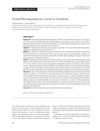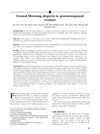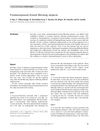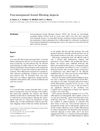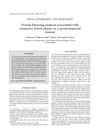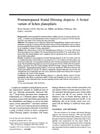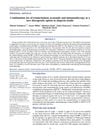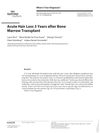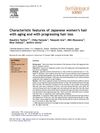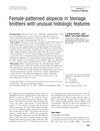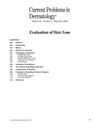Frontal Fibrosing Alopecia: Clinical Presentations and Prognosis
January 2009
in “
British journal of dermatology/British journal of dermatology, Supplement
”
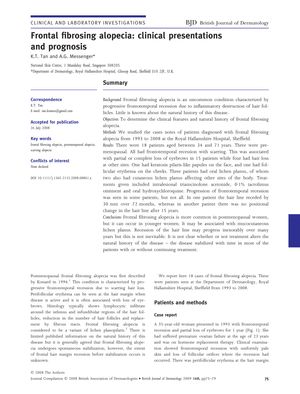
TLDR FFA is more common in postmenopausal women, can affect younger women, and may stabilize over time.
Frontal fibrosing alopecia (FFA) was studied in 18 patients aged 34-71 years at the Royal Hallamshire Hospital from 1993 to 2008. The condition, characterized by frontotemporal hairline recession and scarring, often included eyebrow loss and occasionally hair loss at other sites. Some patients also had mucocutaneous lichen planus. Treatments varied, including intralesional triamcinolone acetonide, 0.1% tacrolimus ointment, and oral hydroxychloroquine. Hairline recession progressed in some patients but not all, with one patient experiencing a 30 mm recession over 72 months, while another saw no change over 15 years. The study concluded that FFA is more common in postmenopausal women, can occur in younger women, and its progression may stabilize over time, regardless of treatment.
